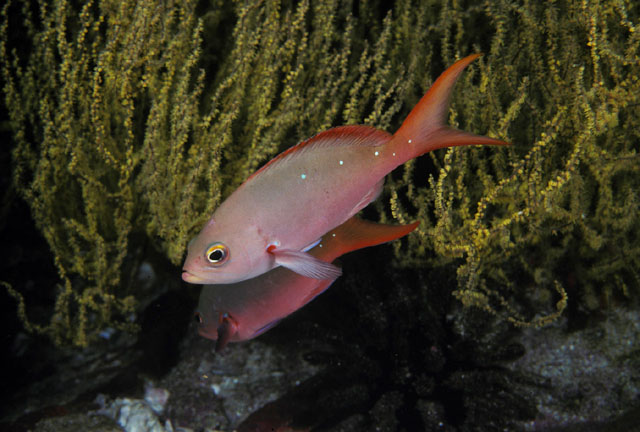| Epinephelidae (Groupers) |
| 35.6 cm TL (male/unsexed) |
|
reef-associated; marine; depth range 10 - 70 m |
| Eastern Pacific: Gulf of California to Peru, including the Revillagigedo, Galapagos, Clipperton, Cocos, and Malpelo islands. |
|
Dorsal spines (total): 9-9; Dorsal soft rays (total): 18-21; Anal spines: 3-3; Anal soft rays: 9-11. Distinguished by the following characteristics: reddish or reddish grey body color with 2-3 bright blue or violet spots on dorsal part of body and another 2 on midlateral part of caudal peduncle; pectoral-fin axil with bright blue spot; dorsal fin base darker, fin margin reddish green; depth of body contained 2.9-3.4 times in SL; head length 3.2-4.0 times in SL; convex interorbital area; subangular preopercle with shallow notch, vertical edge and rear half of lower edge finely serrate; subequal posterior and anterior nostrils (Ref. 89707). |
| Found typically in small aggregations well above the reef, but will retreat to the reef at the approach of danger. Feeds mainly on small planktonic animals picked individually from the water, made possible by their shortened snout which facilitates close-range binocular vision. Excellent source of bait (Ref. 9342). |
|
Least Concern (LC); Date assessed: 09 December 2016 Ref. (130435)
|
| reports of ciguatera poisoning |
|
Also Reported in Islas Revillagigedo. Also Ref. 5592. |
Source and more info: www.fishbase.org. For personal, classroom, and other internal use only. Not for publication.

